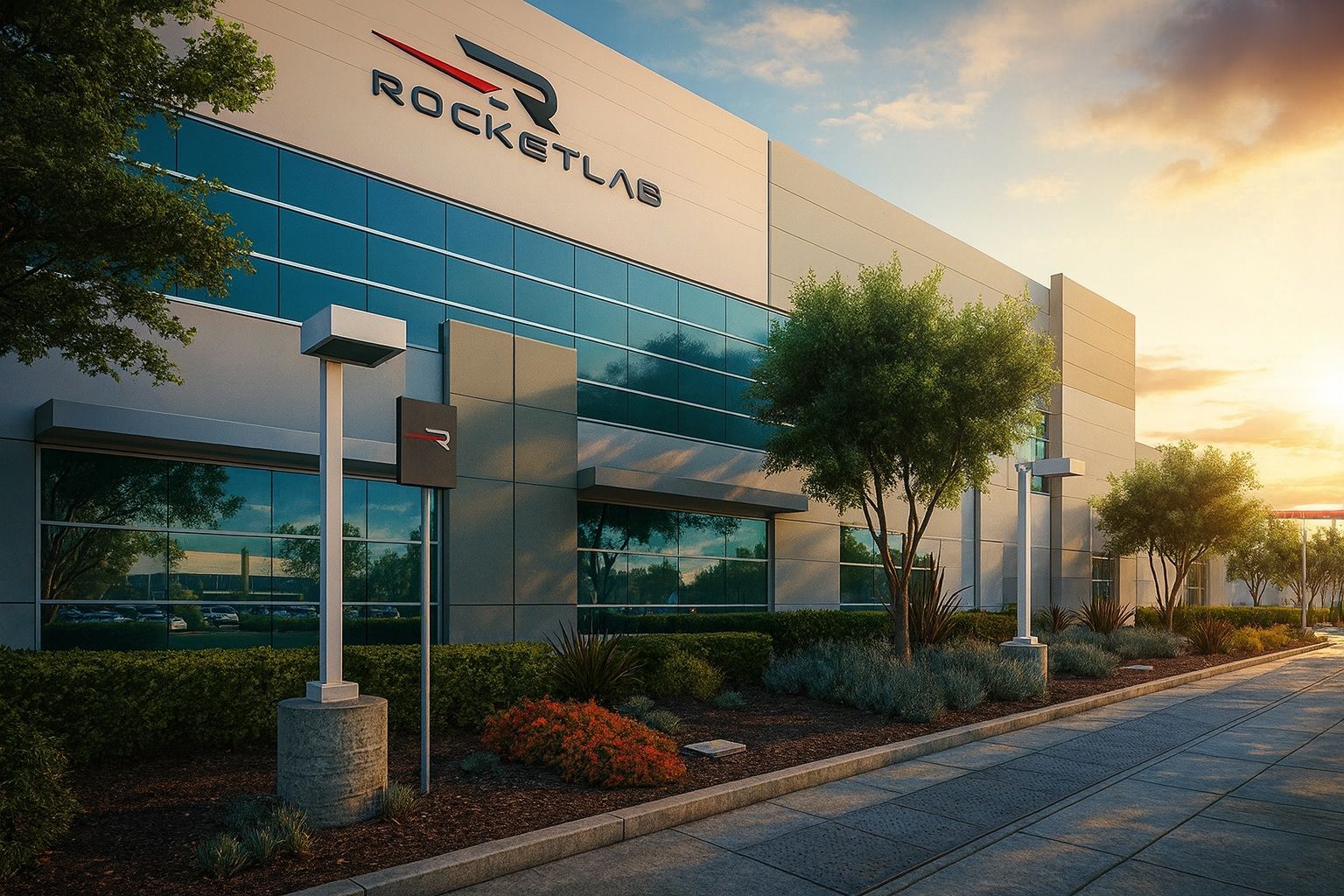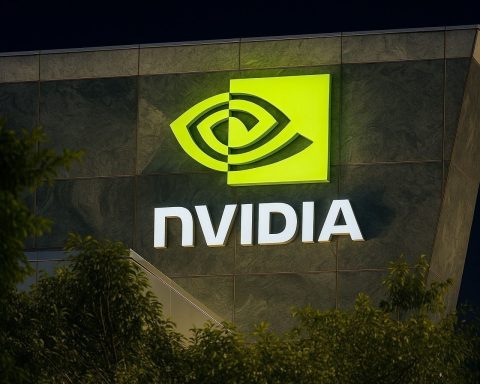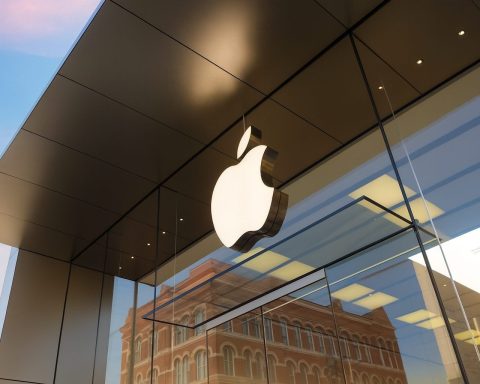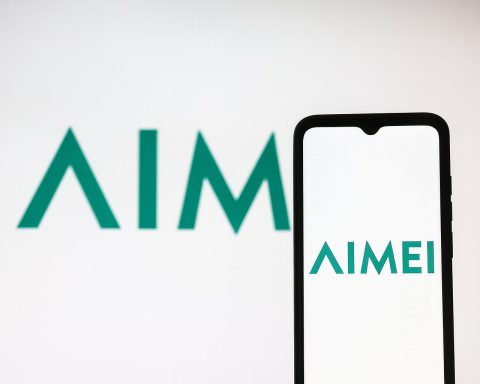- Rocket Lab stock skyrockets: Shares of Rocket Lab (NASDAQ: RKLB) have surged to all-time highs in early October 2025, jumping about 5–7% on the latest news and nearly 700% higher than a year ago [1] [2]. The stock traded around $66 after the announcement, capping a meteoric year-long rise fueled by investor excitement over the company’s growth.
- New multi-launch deal spurs rally:Rocket Lab secured a contract for three additional Electron rocket launches with Japan’s Institute for Q-shu Pioneers of Space (iQPS) [3], bringing iQPS’s total booked missions with Rocket Lab to seven. This expanded partnership – aimed at deploying iQPS’s Earth-imaging radar satellites – cements Rocket Lab as the primary launch provider for iQPS’s constellation [4] [5] and sent investors “reaching for the stars.”
- Record launch cadence & big backlog:Rocket Lab is on track to conduct over 20 launches in 2025 – making its Electron the world’s most frequently launched small orbital rocket [6]. Major contracts are filling the company’s order book, including a record 21-mission deal with Synspective (its largest-ever single-customer order) to deploy a fleet of radar satellites through decade’s end [7]. The company’s order backlog is approaching $1 billion (over half expected to convert to revenue within 12 months) [8], signaling robust demand ahead.
- Growth vs. profits – a mixed picture: Rocket Lab’s revenue is growing rapidly – Q2 2025 sales hit a record $144.5 million (+36% YoY) [9] – but the company remains unprofitable, posting a net loss of ~$66 million in that quarter. It continues to invest heavily in expansion, from building a larger Neutron rocket (a medium-class reusable launcher expected to debut by early 2026) [10] to acquiring satellite tech companies. High valuation is a concern (price-to-sales near 50–60× on current revenues) [11], and insiders have occasionally cashed out shares, yet management’s strategy is to spend now for future payoffs.
- Bullish outlook – with caveats: Wall Street remains bullish on Rocket Lab’s long-term trajectory. The stock carries a consensus “Buy/Moderate Buy” rating, though at an average 1-year price target in the $ Forty-something (below the current price) [12]. Notably, aerospace analysts argue that Rocket Lab’s “true value story starts after 2030,” once its larger rockets and space systems businesses mature [13]. They recommend a buy-and-hold approach – adding on dips (strong buy below ~$33) and being cautious above ~$66 [14] – to ride the company’s long-term growth, while warning that flawless execution on launches (Electron now and Neutron next) is needed to justify the lofty valuation.
Rocket Lab’s Stock Hits New High on Latest Launch Deal
Rocket Lab’s shares have been on a tear in 2025, and the momentum hit a fever pitch this week. On October 8, the stock jumped around 7% to roughly $66 in pre-market trading [15] – a fresh all-time high – after the company announced an exciting new launch contract. The surge continued a stunning run-up over the past year: Rocket Lab’s stock is up about 700% year-over-year, recently hovering near its 52-week high [16]. Even a mid-September wobble (when a $750 million at-the-market share offering plan briefly knocked shares down ~12%) only paused the rally [17]. The overall trend has been sharply upward, with Rocket Lab nearly doubling year-to-date (+95%) by early October [18].
Investors cheered the latest news driving the stock: on Oct. 7, Rocket Lab disclosed a multi-launch agreement with iQPS, a Japanese Earth-observation company. The deal calls for three dedicated Electron rocket missions starting in 2026 from Rocket Lab’s New Zealand launch site [19]. Each mission will loft a synthetic aperture radar (SAR) satellite for iQPS, using Rocket Lab’s own Motorized Lightband separation system to deploy the spacecraft [20] [21]. This contract expands Rocket Lab’s partnership with iQPS – which had already flown four Electrons for them – and brings iQPS’s total booked launches to seven [22] [23]. In other words, iQPS has effectively committed its entire radar satellite constellation to Rocket Lab as launch provider.
The market reaction was immediate. Rocket Lab’s stock “shot up in early trading” on the announcement, according to Seeking Alpha [24]. By the close of Oct. 7, shares were up about 5–6% for the day (and popped further in after-hours), reflecting optimism that more launches = more revenue. Options traders also jumped in: The Fly reported “moderately bullish” options activity with Rocket Lab up ~5.9% and call options heavily outnumbering puts (put/call ratio ~0.39 vs. ~0.49 typical) as the stock climbed [25]. Clearly, the new contract struck a bullish chord on Wall Street.
Why all the excitement? Beyond the immediate revenue from the launches, investors see this deal as validation of Rocket Lab’s strategy. It reinforces the company’s role as a go-to launch provider for small satellite constellations, especially for radar imaging satellites – a growing niche. “The deal solidifies [Rocket Lab’s] role as the primary launch provider for iQPS’s commercial Earth-imaging constellation,” Benzinga noted [26] [27]. In a statement, Rocket Lab founder and CEO Peter Beck highlighted that by choosing Rocket Lab’s Electron rockets and separation systems, iQPS is getting a “highly-integrated launch service that maximizes reliability and streamlines operations for faster access to space” [28]. In other words, Rocket Lab isn’t just selling rocket rides; it’s bundling end-to-end launch solutions (the rocket + in-house satellite deployment hardware) – a one-stop shop that can save customers time and complexity. This value proposition likely helped win the iQPS deal, and it bodes well for attracting other constellation operators.
It’s also worth noting that space stocks in general have been gaining favor recently, adding tailwinds to Rocket Lab. The company was highlighted as one of the “top space stocks to research” in early October [29], and the broader space sector has seen bullish momentum. ETFs like ARKX (ARK Space Exploration) have ticked up, and investors are looking for pure-play space companies – of which Rocket Lab is a rare example on public markets. All this enthusiasm has propelled Rocket Lab’s valuation into the stratosphere (more on that later), even as skeptics caution that near-term revenues are still a fraction of the company’s market cap.
Major Contracts Fueling Growth: iQPS and Synspective Deals
The iQPS contract is just the latest in a string of big wins for Rocket Lab. In late September, the company announced a massive agreement with another Japanese firm, Synspective, that truly put Rocket Lab on the map for investors. That deal – 10 additional Electron launches for Synspective’s SAR satellite constellation – expanded their partnership to 21 dedicated missions in total [30]. It is the largest single-customer launch order in Rocket Lab’s history [31]. Synspective’s CEO noted that Rocket Lab has launched all of their satellites to date and praised Electron’s precision and reliability in deploying their “StriX” radar satellites [32] [33]. In fact, Rocket Lab is Synspective’s sole launch provider so far [34] – a testament to the company’s strong customer relationships.
The scale of the Synspective contract is a game-changer: 21 missions can keep Rocket Lab’s launch pads busy for years. All those launches are slated from Launch Complex 1 in New Zealand over the coming years [35], providing a long-term revenue pipeline. Synspective’s satellites serve applications like disaster monitoring and security, which means they’re counting on regular launch cadence to build out their orbiting fleet [36]. Rocket Lab’s ability to schedule and execute launches on time – something it has a solid track record of – was likely crucial in winning this deal [37]. As Peter Beck said about Synspective, “It’s an honor to add another 10 StriX satellites to Electron’s launch manifest and continue our long-standing partnership” [38].
Now with iQPS adding on three more missions, Rocket Lab has firmly entrenched itself with the two leading private SAR satellite startups in Japan. These back-to-back deals underscore a trend: small satellite constellation operators are racing to secure dedicated launch slots, and Rocket Lab is emerging as a preferred provider. The company’s focus on responsive, frequent launches and vertical integration (making not just rockets but also satellite components, separation systems, etc.) gives it an edge in this market [39] [40]. As one analysis noted, Rocket Lab’s growing backlog and record launch tempo “point to a company on the cusp of scaling up” [41].
For context, Rocket Lab’s Electron rocket is a lightweight launcher (lifting a few hundred kilograms) tailored for individual small-satellite missions. While SpaceX offers rideshare slots on its big Falcon 9 rockets, companies like Synspective and iQPS often prefer dedicated launches where their satellite is the main payload – allowing precise orbital insertion and timing. Electron has essentially dominated this dedicated small-launcher niche: by August 2025, Rocket Lab had flown its 70th Electron mission, making it the most frequently launched small orbital rocket in the world [42]. With 12 missions already completed in the first eight months of 2025 [43], Rocket Lab was on pace to exceed 20 launches for the full year [44]. Few (if any) other commercial small-rocket providers have achieved such cadence. This reliability and rhythm in launch operations give customers confidence that Rocket Lab can deliver satellites to orbit when promised – a critical factor for constellation deployment [45].
The iQPS contract also highlights Rocket Lab’s vertical expansion into space systems. All three of those new missions will use the company’s Motorized Lightband deployer to release the satellites [46] [47]. Rocket Lab acquired the maker of that separation system in 2022, so it can offer mission integration hardware in-house. Additionally, Rocket Lab has been investing in satellite manufacturing and components: it built the Photon satellite bus used in NASA’s CAPSTONE lunar mission, and just last month delivered two Mars-bound spacecraft (“Blue” and “Gold” probes for NASA’s ESCAPADE mission) to Kennedy Space Center [48]. Beck trumpeted that achievement, saying “delivering two interplanetary spacecraft on schedule and within budget for a Mars mission is no small feat…our team has proven that we can take a concept from design to Mars readiness in just a few short years” [49]. In short, Rocket Lab is not only launching satellites for clients – it’s increasingly building satellites and subsystems itself. This diversification means launch customers like iQPS can eventually turn to Rocket Lab for a broader suite of services (from designing satellite parts to operating spacecraft), deepening the business relationship.
Beyond commercial customers, Rocket Lab is also making inroads in government and defense projects, which complement its launch business. In 2025, the company announced plans to acquire Geost, LLC for $275 million (bringing in-house advanced space surveillance and missile-tracking sensor tech) and the satellite division of Germany’s Mynaric for $75 million (adding laser communications terminals) [50]. These moves expand Rocket Lab’s footprint in satellite components and strengthen ties to the defense sector. The U.S. government has already tapped Rocket Lab for missions like a hypersonic launch test under DARPA’s MACH-TB program and a U.S. Air Force contract to study using the upcoming Neutron rocket for point-to-point cargo delivery [51]. Beck has noted that acquiring Geost positions Rocket Lab as “a prime contractor for U.S. national security missions,” enhancing its role in projects like the Space Force’s missile-defense constellation [52]. All of these related endeavors signal that Rocket Lab is morphing from a pure launch company into a broader space technology company – akin to a mini-SpaceX that builds, launches, and manages space systems.
Ramping Up Launches: 20+ Missions in 2025
To fulfill its growing pile of contracts, Rocket Lab has had to dramatically scale up its launch capacity. The company publicly stated it increased Electron production and launch cadence to support 20 or more missions in 2025 [53] [54]. This is a significant jump from prior years – for comparison, Rocket Lab conducted 9 launches in 2022 and 13 launches in 2023. Hitting 20+ in 2025 would solidify Electron’s position as the workhorse of the small launch industry.
So far, they appear on track. By the first week of October, 14 Rocket Lab launches had been completed in 2025, including multiple missions for repeat customers like BlackSky, Capella Space, and of course Synspective and iQPS [55] [56]. Rocket Lab even pulled off two Electron launches just 15 days apart in May–June 2025 for iQPS [57] – a turnaround time that impressed many in the industry. The next mission on the calendar is “Owl New World,” scheduled for October 14, 2025 (UTC) [58], which will carry Synspective’s next StriX satellite. That launch window opens barely a week after the iQPS contract news, underscoring the rapid drumbeat of missions.
Meeting a 20+ launches/year target is no small feat for a company that builds most rocket components itself. It suggests Rocket Lab’s recently expanded production facilities and team are paying off. The company operates two launch pads in New Zealand and one in Virginia, USA – giving some flexibility to increase cadence. Still, execution risks remain: any rocket anomaly or production bottleneck could slow the schedule. Rocket Lab experienced a reminder of this in Sept 2023, when an Electron launch failure briefly grounded flights for a couple of months. In 2025, however, no significant hiccups have been reported; the focus has shifted to routine, reliable launches and clearing a packed manifest.
For investors, Rocket Lab’s ability to consistently launch on schedule is crucial. It not only drives short-term revenue recognition (Rocket Lab books revenue when a launch occurs), but it also builds credibility to win future contracts. The Synspective and iQPS deals likely hinged on Rocket Lab demonstrating a high launch success rate and the capacity to handle back-to-back missions. As one space industry observer noted, having a launcher that can put satellites into orbit on schedule with precision is “crucial” for constellation operators’ business plans [59]. Rocket Lab’s cadence gives it an edge over newer competitors that are still ramping up (or over older launch providers that can’t fly as often).
Looking ahead, Rocket Lab’s planned Neutron rocket will, if successful, take the company to another level of launch capability. Neutron is a medium-lift, partially reusable rocket designed to carry ~8 tons to orbit – 10× the payload of Electron – putting it in the class of SpaceX’s Falcon 9 (albeit smaller). It’s intended for larger satellites, constellations, and even human spaceflight eventually. Neutron’s first launch is expected in late 2025 or 2026 [60]. Rocket Lab has been pouring R&D dollars into Neutron’s development (it’s one reason the company remains in the red financially). If Neutron meets its timeline and performance goals, Rocket Lab could start competing for much bigger contracts – including national security launches and mega-constellation deployments – and not just be limited to the smallsat niche. This expansion into the medium-lift market could open a huge new revenue stream, but it’s also a source of execution risk (developing a new rocket is technically challenging and expensive).
Analysts and investors are watching Neutron closely. Successfully debuting Neutron “would be a game-changer,” potentially placing Rocket Lab in more direct competition with the likes of SpaceX’s Falcon 9 [61], one analysis noted. However, any delays or issues with Neutron could dampen the long-term growth story that currently has investors so excited. Essentially, Rocket Lab’s future valuation assumes Neutron will fly and unlock new markets – a point of both optimism and uncertainty.
Financial Check: Robust Growth, Rising Backlog, No Profits (Yet)
Rocket Lab’s financials reflect a classic high-growth space startup story: soaring revenues, hefty losses. In the second quarter of 2025, the company delivered $144.5 million in revenue, a record high and up 36% from the prior year [62]. Launch services were the main contributor (each Electron launch costs roughly $7.5 million), augmented by growing revenue from the space systems segment (selling satellite components and design services). For Q3 2025, Rocket Lab’s management forecast another record – $145–$155 million in revenue – thanks to the dense launch schedule and contract milestones [63].
Despite this top-line growth, Rocket Lab is not profitable. In Q2 it posted a net loss of about $66 million [64], and it has consistently reported losses each quarter. The reasons are straightforward: the company is reinvesting heavily in its business, from building Neutron and expanding production, to acquisitions and R&D. Its gross margins have been improving as launch rates increase (economies of scale help), but the bottom line remains negative. Rocket Lab does have a comfortable cash reserve, bolstered by the $750 million ATM stock offering announced in September (which, even if used gradually, signals the ability to raise funds as needed) [65].
One metric drawing attention is the company’s backlog, which swelled to about $980 million by mid-2025 [66]. Over half of that is expected to convert into actual revenue within 12 months [67] – an indicator that a lot of launches and deliveries are coming due in the near term. This backlog figure likely doesn’t even fully include the new iQPS missions yet (announced in October) and only partly reflects the huge Synspective contract (announced late Q3). So, the true backlog including those might be well over $1 billion now. A growing backlog is generally a positive sign, demonstrating strong demand for Rocket Lab’s services. It also provides some visibility into future revenue – essentially a queue of business to work through.
However, the flip side is that Rocket Lab’s valuation has run far ahead of its current financials. At ~$66 per share, Rocket Lab’s market capitalization is around $30 billion (given roughly 450 million shares outstanding after recent offerings). For a company on track to maybe ~$600 million in annual revenue (if Q4 is similar to Q3), that’s a price-to-sales (P/S) ratio north of 50×. For context, even many high-growth tech stocks trade at P/S ratios of 10–20×; a 50+ multiple implies investors are extremely optimistic about Rocket Lab’s future growth. Seeking Alpha analyst Dhierin Bechai points out that by traditional valuation metrics (EV/EBITDA, P/E, etc.), RKLB looks very expensive in the near term – but the expectation is that post-2030, revenue and earnings could surge to “grow into” the valuation [68]. Essentially, bulls are valuing Rocket Lab not on what it earns today, but on what they believe it will earn a decade from now if it captures a significant slice of the space market.
Wall Street analysts covering Rocket Lab mostly echo this long-term bullish view with short-term caution. According to MarketBeat, 13 brokerages have a “Moderate Buy” consensus on RKLB [69]. Analysts cite Rocket Lab’s accelerating revenue, expanding launch manifest, and moves into spacecraft manufacturing as key growth drivers [70]. The average 12-month price target was recently around $42–50 per share [71] [72], which notably is below the current trading price. (In fact, as the stock has shot up, some analysts may need to revise their targets upward or risk looking too conservative.) The highest analyst targets are about $60 [73], roughly where Rocket Lab traded post-iQPS news, and the lowest are in the low $30s [74]. This suggests that even bullish analysts acknowledge downside risk if the company falters – after all, a growth stock priced for perfection can ill afford setbacks.
One expert perspective came from The Aerospace Forum (an investment service) which argued that Rocket Lab is a “buy-and-hold” name for long-term investors. The thesis: the space launch and engineering markets are poised for rapid growth, and Rocket Lab has positioned itself as a leader in both [75]. The author recommends accumulating shares on pullbacks – considering it a “strong buy” if it dips below ~$33–34, and possibly trimming or taking profits if it were to soar above ~$66–67 [76]. That roughly bracketed Rocket Lab’s trading range in recent months (it spent the summer of 2025 mostly in the $30s, before doubling this fall). The key, he and others stress, is that Rocket Lab’s true payoff may come over a 5-10+ year horizon, once the investments in Neutron, larger constellations, and government programs translate into substantial cash flows [77]. In the near term, the stock’s rich valuation and the need for flawless execution (no launch failures, timely Neutron development, etc.) are prominent risks [78].
It’s also worth noting Rocket Lab’s shareholder dynamics: insiders have been selling some shares (mostly through pre-scheduled plans) over the past two years – about $140 million worth by top executives [79]. In September 2025, even the CFO sold a chunk of stock [80]. While insiders still hold significant stakes and these sales were orderly, such moves did give a few investors pause. They raised the question: if the company’s future is so bright, why not hold on to every share? Of course, insiders often sell for personal diversification or other reasons unrelated to company outlook. But it’s a data point that tempered some of the exuberance [81]. The ATM offering news in mid-September likewise reminded the market that Rocket Lab will likely issue more shares (diluting existing shareholders) to fund its growth, a common practice for pre-profit companies.
Outlook: “Reaching for the Stars” – But Mind the Execution Risk
Rocket Lab’s story encapsulates the promise and challenges of the new space economy. On one hand, the company has achieved something truly impressive: it went from a small startup launching test rockets in New Zealand, to a publicly traded space company with a $30B valuation and a leading position in the smallsat launch market – all in under a decade. Its Electron rocket has not only proven dependable but prolific, launching more in 2025 than some government space agencies. And Rocket Lab isn’t standing still; it’s leveraging that launch base to branch out into building spacecraft, supplying components, and developing a larger rocket that could dramatically expand its addressable market.
The recent flurry of contracts (Synspective, iQPS, etc.) and missions (Mars probes, hypersonic tests) shows that Rocket Lab is firing on all cylinders. CEO Peter Beck, often seen as an innovative visionary akin to a mini-Elon Musk (but from New Zealand), has relentlessly pushed to make Rocket Lab a one-stop shop for space services. If the company continues executing well, it could ride the wave of demand for space infrastructure – from Earth observation to telecom constellations – for years to come. Analysts widely agree the long-term trajectory is upward, with Rocket Lab positioned to capture outsized growth as the space industry expands [82].
On the other hand, investing in Rocket Lab today requires faith in long-term outcomes and tolerance for volatility. The stock’s enormous run-up means a lot of good news is already “priced in.” Any stumble – be it a launch failure, a delay in Neutron’s timetable, or a broader market pullback from high-growth stocks – could trigger a sharp correction in RKLB shares. The space business can be unforgiving: rocket science is hard, and even a single mission failure can ground a fleet temporarily (halting revenue). Rocket Lab will need to maintain a high success rate as it ramps to a more frequent launch cadence. It will also have to prove that Neutron can come to market on schedule and compete effectively, which is not guaranteed.
Competition is another factor. While Rocket Lab currently dominates dedicated small launches, new entrants are on the horizon – companies like Relativity Space, Firefly Aerospace, and Astra are all developing rockets targeting similar markets. Larger players like SpaceX and the Indian Space Research Organization (with its PSLV rocket) also provide alternatives for some smallsat customers (often at lower cost per kilogram, though with less schedule flexibility). Rocket Lab’s strong brand and first-mover advantage in this niche give it a leg up, but staying ahead will require continuous innovation and efficiency gains. The company’s bet on Neutron suggests it doesn’t want to remain confined to small payloads forever, since the biggest revenue opportunities (and largest satellites) lie in the medium-to-heavy launch arena.
Financially, watching the margins and cash burn will be important in upcoming quarters. As Rocket Lab executes these newly won contracts, investors will expect to see revenue continue its steep climb. There’s some indication that economies of scale are improving – for instance, the gross margin in launch services has been improving as they fly more often [83]. If the company can narrow its losses while sustaining 30%+ annual revenue growth, it will help justify the valuation. Conversely, any slowdown in growth or unexpected expenses could raise questions.
In the near term, milestones to watch include the outcome of the next iQPS launch in November 2025 (a successful mission would further cement confidence [84] [85]), the progress updates on Neutron’s development (Rocket Lab may perform engine tests or unveil hardware that signal how close it is to the first flight), and whether additional contracts (commercial or government) are announced in coming months. The fact that Rocket Lab has snagged two significant multi-launch deals in quick succession (Synspective and iQPS) raises the question: who’s next? There are plenty of other smallsat constellation operators (in imaging, Internet of Things, weather monitoring, etc.) that could seek dedicated launches. Rocket Lab’s sales pipeline is likely buzzing, and any news of further contract wins could be catalysts for the stock.
Bottom line: Rocket Lab’s journey from a penny stock to a market star in 2025 reflects both genuine achievements and forward-looking optimism. The company is “reaching for the stars” – literally, with its rockets, and figuratively, with a stock price baking in ambitious growth. Public interest in the space economy is at a high, and Rocket Lab has become a flagship investment in that theme. As one market commentator put it, “Rocket Lab’s growing backlog and record revenue point to a company on the cusp of scaling up”, but the execution challenges ahead are real [86]. For investors, it’s a high-wire act: the upside could be astronomical if Rocket Lab becomes a dominant space player by 2030, but the path will require near-flawless delivery on its promises. In the meantime, Rocket Lab is basking in the glow of its recent successes – and for the first time, has the stock price to match its name. 🚀💫
Sources:
- Benzinga – “Why Rocket Lab’s Latest Launch Deal Has Investors Reaching for the Stars” (Oct 8, 2025) [87] [88]
- Seeking Alpha – “Rocket Lab rallies to an all-time high after signing a new multi-launch contract” (Oct 8, 2025) [89]
- Seeking Alpha – “Rocket Lab’s True Value Story Starts After 2030, Here’s Why I’m Still Bullish” (analysis by D. Bechai, Oct 7, 2025) [90]
- TS2 Tech (TechSpace 2.0) – “Rocket Lab’s 2025 Blast-Off: 700% Stock Surge, Record Launches, and Mars Mission Milestones” (Oct 7, 2025) [91] [92] [93]
- Investing.com – “Rocket Lab stock rises on expanded multi-launch deal with iQPS” (Oct 7, 2025) [94] [95]
- MarketBeat – Rocket Lab news aggregator and analyst rating data (Oct 2025) [96] [97]
- The Fly via TipRanks – “Moderately bullish activity in Rocket Lab… with shares up 5.9%” (Oct 7, 2025) [98]
- Rocket Lab press release – “Rocket Lab Secures Latest Multi-Launch Contract with iQPS” (Oct 7, 2025) [99] [100]
References
1. ts2.tech, 2. www.benzinga.com, 3. www.benzinga.com, 4. www.benzinga.com, 5. www.benzinga.com, 6. ts2.tech, 7. ts2.tech, 8. ts2.tech, 9. ts2.tech, 10. ts2.tech, 11. ts2.tech, 12. ts2.tech, 13. seekingalpha.com, 14. seekingalpha.com, 15. www.benzinga.com, 16. ts2.tech, 17. ts2.tech, 18. ts2.tech, 19. www.benzinga.com, 20. www.benzinga.com, 21. www.benzinga.com, 22. www.benzinga.com, 23. www.benzinga.com, 24. seekingalpha.com, 25. www.tipranks.com, 26. www.benzinga.com, 27. www.benzinga.com, 28. www.benzinga.com, 29. www.marketbeat.com, 30. ts2.tech, 31. ts2.tech, 32. ts2.tech, 33. ts2.tech, 34. ts2.tech, 35. ts2.tech, 36. ts2.tech, 37. ts2.tech, 38. ts2.tech, 39. www.stocktitan.net, 40. www.stocktitan.net, 41. ts2.tech, 42. ts2.tech, 43. ts2.tech, 44. ts2.tech, 45. ts2.tech, 46. www.benzinga.com, 47. www.investing.com, 48. ts2.tech, 49. ts2.tech, 50. ts2.tech, 51. ts2.tech, 52. ts2.tech, 53. www.benzinga.com, 54. www.investing.com, 55. ts2.tech, 56. ts2.tech, 57. www.investing.com, 58. www.benzinga.com, 59. ts2.tech, 60. ts2.tech, 61. ts2.tech, 62. ts2.tech, 63. ts2.tech, 64. ts2.tech, 65. ts2.tech, 66. ts2.tech, 67. ts2.tech, 68. seekingalpha.com, 69. www.marketbeat.com, 70. ts2.tech, 71. www.marketbeat.com, 72. finance.yahoo.com, 73. www.tipranks.com, 74. www.tipranks.com, 75. seekingalpha.com, 76. seekingalpha.com, 77. seekingalpha.com, 78. seekingalpha.com, 79. ts2.tech, 80. ts2.tech, 81. ts2.tech, 82. ts2.tech, 83. ts2.tech, 84. www.stocktitan.net, 85. www.stocktitan.net, 86. ts2.tech, 87. www.benzinga.com, 88. www.benzinga.com, 89. seekingalpha.com, 90. seekingalpha.com, 91. ts2.tech, 92. ts2.tech, 93. ts2.tech, 94. www.investing.com, 95. www.investing.com, 96. www.marketbeat.com, 97. www.marketbeat.com, 98. www.tipranks.com, 99. www.stocktitan.net, 100. www.stocktitan.net







